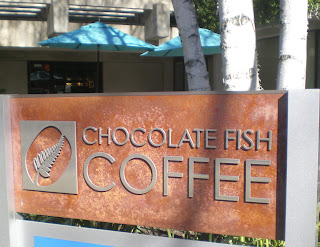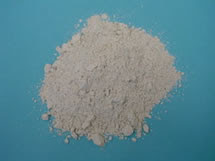 |
| Daring Bakers: Biscuit Joconde Imprime |
The January 2011 Daring Bakers’ challenge was hosted by Astheroshe of the blog accro. She chose to challenge everyone to make a Biscuit Joconde Imprime to wrap around an Entremets dessert.
That means - a sponge cake where a pattern is imprinted in it and is used to create the surrounding shell of a filled dessert. The main part of the challenge was the decorated sponge, then we could fill it with whatever we wanted. I would highly recommend that you check out the DB link below for a couple of weeks. You'll see pictures of other people's before they take it down.
This was one of the best Daring Bakers' challenges yet. I learned a great, decorative technique that was not very difficult. I would certainly do this again for some special occasion. I used it as a dessert for a birthday dinner I made for a friend and I think it turned out rather well.
Since my friend works with flowers and plants, I decided to go with a floral theme. I only had a few gel colors left and so grabbed a royal blue and a green. I had seen others' examples and knew that I should mix the color dark for it to show well. You pipe your design onto parchment paper and freeze it for 30 minutes. Meanwhile you make the sponge and heat the oven. After the time is up, you spread the sponge batter over the pattern and then bake. The resulting sponge is flexible enough to be put into a mold.
I made a chocolate dacquoise for the bottom and a no-bake cheesecake type filling. In the middle I placed some frozen blackberries. I flavored the cheesecake mixture with lemon curd and lemon zest.
Patterned Joconde-Decor Paste
(I only used a half recipe, and even then, had plenty left over.)YIELD: Two ½ size sheet pans or a 13” x 18” (33 x 46 cm) jelly roll pan
Ingredients
14 tablespoons/ 210ml/ 7oz/ 200g unsalted butter, softened
1½ cups plus1½ tablespoons/ 385ml/ 7oz/ 200g Confectioners' (icing) sugar
7 large egg whites - about 7 oz / 200g
1¾ cup/ 420ml/ 7¾ oz/ 220g cake flour
Food coloring gel, paste or liquid
Ingredients
14 tablespoons/ 210ml/ 7oz/ 200g unsalted butter, softened
1½ cups plus1½ tablespoons/ 385ml/ 7oz/ 200g Confectioners' (icing) sugar
7 large egg whites - about 7 oz / 200g
1¾ cup/ 420ml/ 7¾ oz/ 220g cake flour
Food coloring gel, paste or liquid
COCOA Décor Paste Variation: Reduce cake flour to 6 oz / 170g. Add 2 oz/ 60 g cocoa powder. Sift the flour and cocoa powder together before adding to creamed mixture.
Directions:
Directions:
- Cream butter and sugar until light and fluffy (use stand mixer with blade, hand held mixer, or by hand)
- Gradually add egg whites. Beat continuously.
- Fold in sifted flour.
- Tint batter with coloring to desired color, if not making cocoa variation.
Joconde Sponge
YIELD: Two ½ size sheet pans or a 13” x 18” (33 x 46 cm) jelly roll pan
Ingredients:
¾ cup/ 180 ml/ 3oz/ 85g almond flour/meal - *You can also use hazelnut flour, just omit the butter
½ cup plus 2 tablespoons/ 150 ml/ 2⅔ oz/ 75g confectioners' (icing) sugar
¼ cup/ 60 ml/ 1 oz/ 25g cake flour *See note below
3 large eggs - about 5⅓ oz/ 150g
3 large egg whites - about 3 oz/ 90g
2½ teaspoons/ 12½ ml/ ⅓ oz/ 10g white granulated sugar or superfine (caster) sugar
2 tablespoons/ 30 ml/ 1oz / 30g unsalted butter, melted
¾ cup/ 180 ml/ 3oz/ 85g almond flour/meal - *You can also use hazelnut flour, just omit the butter
½ cup plus 2 tablespoons/ 150 ml/ 2⅔ oz/ 75g confectioners' (icing) sugar
¼ cup/ 60 ml/ 1 oz/ 25g cake flour *See note below
3 large eggs - about 5⅓ oz/ 150g
3 large egg whites - about 3 oz/ 90g
2½ teaspoons/ 12½ ml/ ⅓ oz/ 10g white granulated sugar or superfine (caster) sugar
2 tablespoons/ 30 ml/ 1oz / 30g unsalted butter, melted
*Note: How to make cake flour: http://www.joythebaker.com/blog/2009/09/how-to-make-cake-flour/
Directions:
- In a clean mixing bowl whip the egg whites and white granulated sugar to firm, glossy peeks. Reserve in a separate clean bowl to use later.
- Sift almond flour, confectioner’s sugar, cake flour. (This can be done into your dirty egg white bowl)
- On medium speed, add the eggs a little at a time. Mix well after each addition. Mix until smooth and light. (If using a stand mixer use blade attachment. If hand held a whisk attachment is fine, or by hand. )
- Fold in one third reserved whipped egg whites to almond mixture to lighten the batter. Fold in remaining whipped egg whites. Do not over mix.
- Fold in melted butter.
 |
| finished decorated sponge, trimmed |
Preparing the Joconde- How to make the pattern:
(Note: The directions here explain making a striped pattern. I chose to pipe a freehand pattern using a pastry bag.)
- Spread a thin even layer of décor paste approximately 1/4 inch (5 millimeter) thick onto silicone baking mat with a spatula, or flat knife. Place mat on an upside down baking sheet. The upside down sheet makes spreading easier with no lip from the pan.
- Pattern the décor paste – Here is where you can be creative. Make horizontal /vertical lines (you can use a knife, spatula, cake/pastry comb). Squiggles with your fingers, zig zags, wood grains. Be creative whatever you have at home to make a design can be used. OR use a piping bag. Pipe letters, or polka dots, or a piped design. If you do not have a piping bag. Fill a ziplock bag and snip off corner for a homemade version of one.
- Freeze for at least 15 minutes.
- After you remove from the freezer, immediate spread sponge batter over the pattern evenly.
- Bake at 475ºF /250ºC until the joconde bounces back when slightly pressed, approx. 15 minutes. You can bake it as is on the upside down pan. Yes, it is a very quick bake, so watch carefully.
- Cool. Do not leave too long, or you will have difficulty removing it from mat.
- Flip cooled cake on to a powdered sugared parchment paper. Remove silpat. Cake should be right side up, and pattern showing! (The powdered sugar helps the cake from sticking when cutting.)
Chocolate Dacquoise- this is a crisp meringue so use it as a base You could also use any cake you have as a base.
35 g confectioner's sugar
3 g cake flour
4 g cocoa powder
42 grams almond flour
50 grams egg whites
9 grams white sugar
3 g cake flour
4 g cocoa powder
42 grams almond flour
50 grams egg whites
9 grams white sugar
Sift together first three ingredient's.
Mix in almond flour
Whip egg whites and sugar to medium peaks.
Fold the dry into meringue.
Mix in almond flour
Whip egg whites and sugar to medium peaks.
Fold the dry into meringue.
Draw a circle on parchment paper smaller than your mold. turn over. Pipe dacquoise in concentric circles inside drawn circle. It is smaller smaller than your mold so when you pour the bavarian over it, it will encase it completely. Pipe to 1/2 inch thickness. Bake at 320 f def convection until dry and crisp. Reserve.
Final assembly:
- Line a springform pan with plastic wrap.
- Place the dacquoise bottom into the pan.
- Cut and shape the patterned joconde around the sides of the pan with the pattern facing outward.
- Fill the entremet with whatever fillings you choose.










 Chicken Thigh
Chicken Thigh


.jpg)

































